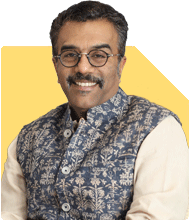Mayank Chandel |2510 Answers |Ask -Follow
IIT-JEE, NEET-UG, SAT, CLAT, CA, CS Exam Expert - Answered on Sep 14, 2023
Besides coaching students for entrance exams, he also guides Class 10 and 12 students about career options in engineering, medicine and the vocational sciences.
His interest in coaching students led him to launch the firm, CareerStreets.
Chandel holds an engineering degree in electronics from Nagpur University.... more

My Daughter finished her B-tech in Mechanical Engineering and now she wants to pursue MS in Data Science. She has got admit card from UNT in US. Sir i would like to know about the future prospects.
there is very good for MS in Data Science. University of North Texas amongst Tier-1.
You may like to see similar questions and answers below
Chocko Valliappa |514 Answers |Ask -Follow
Tech Entrepreneur, Educationist - Answered on Mar 06, 2024
Chocko Valliappa |514 Answers |Ask -Follow
Tech Entrepreneur, Educationist - Answered on Feb 27, 2024
Chocko Valliappa |514 Answers |Ask -Follow
Tech Entrepreneur, Educationist - Answered on Jun 08, 2024
Dr Dipankar Dutta |1776 Answers |Ask -Follow
Tech Careers and Skill Development Expert - Answered on Oct 03, 2024
Nayagam P P |9478 Answers |Ask -Follow
Career Counsellor - Answered on Jul 27, 2025
Nayagam P P |9478 Answers |Ask -Follow
Career Counsellor - Answered on Jul 27, 2025
Nayagam P P |9478 Answers |Ask -Follow
Career Counsellor - Answered on Jul 27, 2025
Nayagam P P |9478 Answers |Ask -Follow
Career Counsellor - Answered on Jul 27, 2025
Radheshyam Zanwar |5865 Answers |Ask -Follow
MHT-CET, IIT-JEE, NEET-UG Expert - Answered on Jul 27, 2025
Nayagam P P |9478 Answers |Ask -Follow
Career Counsellor - Answered on Jul 27, 2025
Nayagam P P |9478 Answers |Ask -Follow
Career Counsellor - Answered on Jul 27, 2025
Nayagam P P |9478 Answers |Ask -Follow
Career Counsellor - Answered on Jul 27, 2025
Nayagam P P |9478 Answers |Ask -Follow
Career Counsellor - Answered on Jul 27, 2025
Nayagam P P |9478 Answers |Ask -Follow
Career Counsellor - Answered on Jul 27, 2025




















